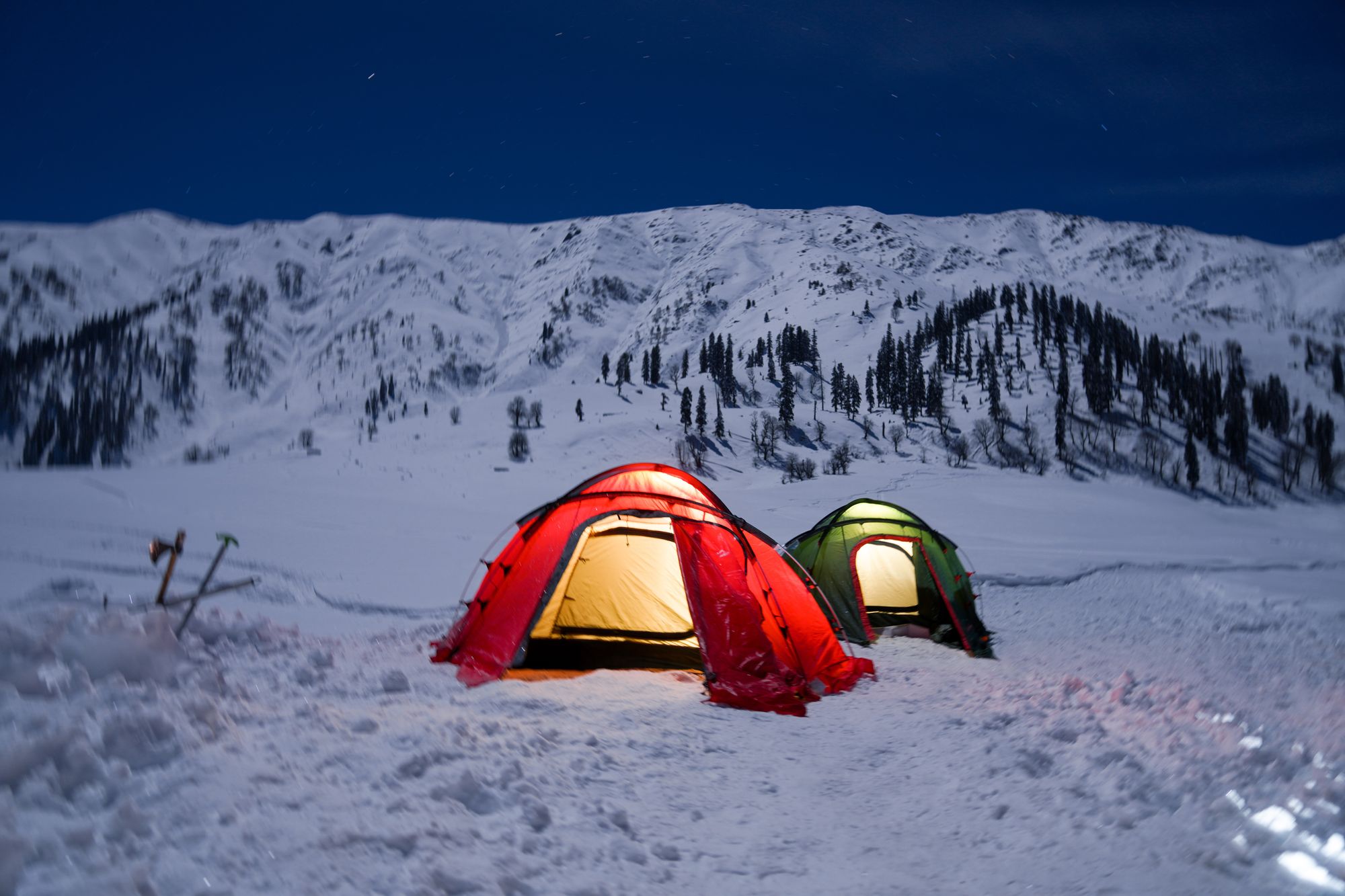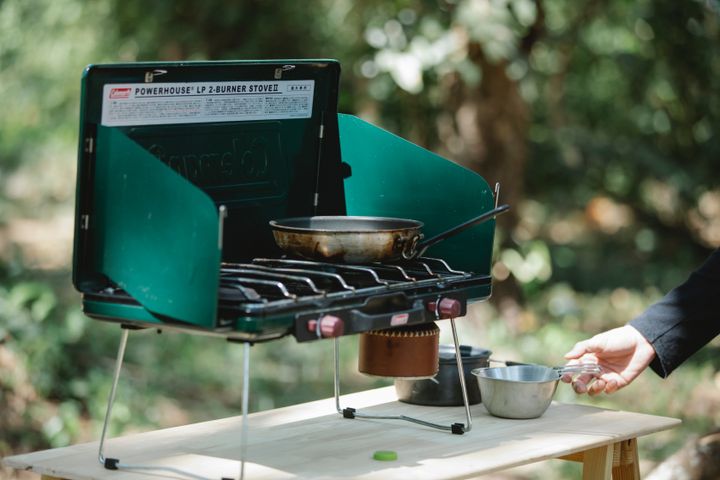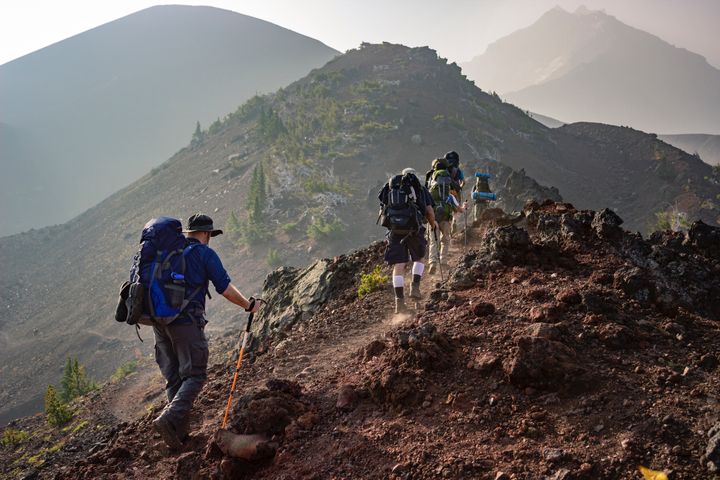Campsite Organization: Organize Your Camping Adventure
There's no better feeling than setting up your own campsite with the comforts of home in the great outdoors. With a bit of knowledge, you can make sure your campsite has all the necessities for making memories that won't soon be forgotten

Are you looking for a way to create memories that will last more than a lifetime?
Camping is the perfect way to explore our beautiful planet while taking your time to appreciate its beauty and enjoy some much-needed downtime. It’s also incredibly rewarding, as it helps you strengthen relationships with family and friends, get closer to nature, and learn new camping skills in an environment away from everyday life.
There's no better feeling than setting up your own campsite with the comforts of home in the great outdoors. With a bit of knowledge, you can make sure your campsite has all the necessities for making memories that won't soon be forgotten! You'll be ready for any exciting adventure and will have all of your needs taken care of no matter where or where you're going on vacation.
By reading this article, you have just signed up for our best bang-for-the-buck online Campsite Basics course! Since it's free...understand our motivation is simply to help point you in the right direction so you will fall in love with camping as we have.
Why We Chose To Write This
Camping can be a lot of fun, but it's also important to be prepared. Doing the work in the preparation phase will surely help with the rest.
It can be so easy to forget something important when you're packing for your camping trip. The importance of having a gear checklist along with packing tips for new and seasoned campers alike is super important. (Ours is down below and free for you to download)
With Outdoor Verified, you can rest assured that you have everything you need for a great camping trip. Over our more than 40 years of camping, we have made just about every single mistake possible. With that and some great advice from other campers, we have put together these tips. We'll provide you with all the information and resources you need to make your camping experience enjoyable and hassle-free.
Get your free downloadable camping checklist here!
Camping Gear - Some Basics
The basics of setting up a campsite involve having the necessary camping, cooking, sleeping, and campfire equipment. Most people on average camp with budget friendly gear, so don't worry about the Jones'. It is also important to be prepared for any safety concerns that may arise.
- Camping Equipment: This includes items like camping tents, a sleeping bag, sleeping pads, ground tarps or footprints, tent poles, stakes for tents, chairs, hatchets, and a hammer (preferably a soft mallet) for setting up tents or staking down tarps.
- Cooking Equipment: This includes items such as a camp stove and fuel (propane or white gas), pots and pans for cooking food over the fire or stovetop, dishes/utensils, fuel containers (for coal or propane), and cleaning supplies like paper towels.
- Sleeping Gear: This should include blankets or sleeping bags, self inflating air mattresses, sleeping pads, camping cots if desired, pillows, eye masks to block out light when sleeping during the day. Whatever is needed to get a good night's sleep and protect from the hard ground.
- Campfire Necessities: Local wood for burning in fire pits should be collected from around the area or brought. Campers also need tinder (paper or wood shavings), kindling (smaller pieces of dry wood), matches/ long lighter to start a fire as well as cooking tools such as grills/racks/tripods for cooking over an open flame.
- Safety - First Aid: It is important to bring a few things along any necessary medications as well as first aid kit including bandages and wound care supplies if needed in case of an emergency. Additionally, it is a good idea to have flashlights with extra batteries in case of power outages at night time so you can navigate your way back to your campsite safely. Staying hydrated with a good water supply and water bottle for each person is essential regardless of whether the water is from the campground or it is filtered water. This is not really safety, but, bring duct tape. That's one of our favorite tips because you just never know...

- Meal Planning: Planning camp meals for camping trips requires a bit of thought and preparation. When selecting recipes to make while out in the wilderness, it is important to choose items that are lightweight, nutritious, and easy to cook over an open fire or on a portable stove. Proteins like canned tuna, salmon, hot dogs and beans as well as carbs like potatoes, rice, and quinoa are good choices since they can be cooked quickly or prepared ahead of time in foil pouches. To add flavor to dishes, consider bringing dried herbs and spices as well as condiments like mustard, ketchup, hot sauce, olive oil and vinegar and whatever your campers prefer. For snacks or quick breakfasts before heading out for the day’s activities, bring nuts and seeds along with energy bars or pre-made trail mix for an added boost of nutrition. Don’t forget a few treats either! Chocolate pudding cups and s'mores ingredients make delicious desserts after dinner around the campfire. With some planning ahead of time you can enjoy tasty meals in the great outdoors with minimal fuss. Consider using the plastic storage bins as a camping pantry and other gear storage.
National Park Service & BLM Land

The National Park Service (NPS) and the Bureau of Land Management (BLM) manage over 800 million acres of public lands throughout the United States. These lands provide a variety of recreational opportunities, including camping. In order to camp on NPS or BLM land, visitors must obtain a permit from the relevant agency. Depending on the type of camping, different permits may be required.
Permits
For instance, tent camping in most NPS parks requires an individual camping permit that must be obtained in advance either online or through a visitor center. Visitors should check for any seasonal restrictions and additional fee requirements before planning their trip. Group camping is also available in some parks and requires a special application. Similarly, some BLM sites require an America The Beautiful Pass for vehicle access and overnight stay.
Reservations
In addition to these permits, many public lands require campers to make reservations in advance as well as abide by fire safety regulations during fire season and local ordinances. We are a big fan of reservations. Campers should also be aware of any limitations regarding stays at each site as well as any other rules governing their activities while on public land. Finally, visitors are encouraged to practice Leave No Trace principles and respect the environment when visiting NPS or BLM campsites.
Tent Camping Setup

When setting up one's campsite in an organized manner when tent camping in a campground, the first step is to identify the perfect camping spot. Many campsites already have "tent pads" that are designated for pitching your tent. Also, the spots that show wear are likely some of the best simply because others have used them before. If not, here are some things to consider when deciding where to camp.
Choosing The Tent Site
The campsite should be far away from the main road, and preferably near some natural water source such as a lake or stream. It is also important to look for areas that are flat and free of any rocks or debris that may puncture the tent. Additionally, shelter should be taken into account by making sure there are trees present for shade and protection from rain and high winds. Whether hot weather or cold weather will also have an impact on your selection. Make sure you do not set up your tent downwind from the fire. Tents are flammable.
Pitching The Tent
Once a spot has been identified, it is time to set up the tent. It should be set up on level ground and not on an incline, as this can make sleeping uncomfortable. Any pegs provided with the tent should be inserted into the ground to anchor it down in case of strong winds. A tarp or tent footprint can then be placed underneath the tent; this will protect it from moisture if it rains while also providing extra cushioning for comfort when sleeping. A sleeping pad, air mattress or camping cot also helps overcome rocky ground.
Furniture Setup
When setting up furniture around the campsite, it is important to create a functional layout that allows plenty of room to move around comfortably without cluttering up the area too much. Imagine you just got out of your camp cot for a potty break. Set up in a way that you can easily avoid tripping.
A seating area can be created by laying out two chairs or stools generally around the fire pit. If you brought a canopy or rain fly for additional shade, we have two suggestions. Either place it over the picnic table, or outside the opening of the tent for added dry space to store gear.
Kitchen Setup
For food preparation or playing games, setting up a camp table is essential for ease of cooking. Many campsites already have picnic tables but even then having a separate area to cook on your camp stoves makes eating at the picnic table that much more relaxing. For convenience at mealtime, having a few basic supplies on hand such as plates, cutlery, cups, cooking utensils, and pots/pans should be brought as well. Organizing by placing gear in plastic bins with lids and labels, sealable plastic bags, or a stuff sack helps to know where everything goes when it comes out of the vehicle.
Safety
Safety must always come first when camping so precautions must be put in place to prevent accidents or wildlife encounters from occurring. This includes storing food items properly inside airtight containers and suspending them from tree branches if necessary; keeping noise levels low during nighttime hours (quiet hours are usually posted); avoiding contact with wild animals; being aware of possible hazardous areas such as cliffs or steep slopes nearby; and using insect repellent when needed. Sunscreen for the hot sun is a must.Delegating the responsible use of the campfire is a great way to get buy-in from kids if they are old enough to handle the responsibility. It is important to ensure no open flames are left unattended.
Curious about bear safety?

Car Camping Setup

When car camping and setting up, there are many differences when compared to what a traditional tent campers do. Car camping gives you the ability to access more remote locations that would otherwise not be accessible with a tent camp setup. With a car camp setup, you don’t have to worry about lugging tents and gear around from one campsite to another so, the setup will look quite different. Always consider campers in other campsites ahead when parking your vehicle.
Sleeping in Your Vehicle
Think about where you are storing all the gear while you travel between camping spots. Though it is nice to be able to pull off where you want and camp with a much smaller overall footprint, all the gear inside the vehicle will need to go somewhere when it's time to sleep. There are a few options here, though. Bring along an easy-up canopy and place it over the tailgate area of your vehicle. At night when you sleep, you will be able to set out the bigger items under the canopy and protect them from rain. The other obvious choice is a rooftop carrier that holds the bulk of your gear. The bits left over can be stored in the front seats overnight so you can stretch out and sleep comfortably.
Cooking
Another advantage of setting up a canopy at the tailgate is that you can use that spot as a camp kitchen. Having shelter from either the rain or the sun is much more comfortable when cooking. Setting up the chairs there creates an extended vestibule for eating, chatting or even playing games if it does rain. Running a clothesline under the canopy works for any clothing that may have gotten wet or was washed.
Safety
The same basic principles apply to car camping with a few additions. If it is cold outside, resist the temptation to run the car to provide heat to avoid exposure to carbon monoxide. If you are camping at higher elevations it will get cold overnight. Be prepared with the right gear rated for those temperatures. The other consideration for car camping is avoiding eating and storing food in your car. Store it a safe distance away just like you would tent camping. Bears have been known to break into cars. If it's early spring, they are hungry!
RV Camping Setup

When camping in an RV, campers will generally have access to things like electricity, running water, and even a refrigerator or stove depending on the type of RV they are driving or renting. Additionally, RVs come with features such as air conditioning and heating that make the camping experience more comfortable. And the big one...RVs also come equipped with bathrooms and showers which allow campers to stay clean while living in nature. You may be asking yourself why you would ever camp any other way. Understood.
Hook Up Connections
When setting up an RV campsite several different steps need to be taken when compared to setting up a tent camping site. First off, campers need to consider whether there is enough room for the RV at their chosen spot. Generally speaking, sites will be listed as RV compatible to a specified length to help you out. Second, the necessary hookups must be connected; this includes water, electric, and sewer lines (if applicable). If not, then ensure you are aware of the location of the nearest dump station.
Level and Convert From Travel Mode
After these connections are made it is time to level out the RV by making use of jacks and chocks if needed. There are usually leveling site glasses on the corners or sides of the RV to be able to make sure you have it right. The last part of RV setup is making sure all the pop-outs are open, the appliances are set to be used and the bed is ready with linens installed. If you have a pop-up trailer, this will include setting up the shower, kitchen cabinets, sofas, and table. These are usually in travel mode until it is opened up.
Dispersed Camping Setup

When camping in a dispersed campsite instead of developed campgrounds, it is important to be prepared and follow the proper guidelines. First, you should always check with the land manager to find out if permits are required or if there are any special restrictions for the area you plan on camping in. Also, find out how long you can stay in one spot if an extended vacation. It is also important to know about fire restrictions and bear safety regulations. Once you have that information, you can begin setting up your campsite.
Pick and Clear Spot
When choosing a space to camp in, try to select one that is at least 100 feet away from roads, trails, and water sources. Additionally, make sure your campfire is at least 15 feet away from any trees or brush that could easily catch fire. Be sure to also dig a small pit for your fire so that it does not spread too far. After your campsite is all setup, clear away any debris or flammable materials such as leaves and twigs. Use the guidelines from above according to whether you are tent camping or RV camping.
Ready for a Campfire
Once your campsite is all setup, start gathering wood for your fire. Use only dead wood which can be found lying on the ground; never cut down live trees or branches! Collect enough wood to last the duration of your stay, making sure some of it is split into kindling-sized sticks for easy lighting. Make sure to keep your campfire in check – never leave it unattended and always fully extinguish all embers before you leave so they do not spark a wildfire!
Leave No Trace (Always)
Always remember responsible camping practices when camping in dispersed sites! Leave no trace by packing out anything you bring in and cleaning up any messes you made before leaving the area better than when you found it. With these tips in mind, setting up camp on a dispersed site will guarantee an enjoyable experience for everyone involved!
Bear Safety

- Always set up your campsite at least 100 feet away from any water sources, as bears often frequent these areas.
- Be aware of your surroundings. Bears have a great sense of smell and can detect food from far distances. If you spot a bear close by, make sure to stay calm and get back to your camp as quickly as possible.
- Store all food items and toiletries in an air-tight storage container or hang them high up on a tree branch at least 10 feet off the ground. Avoid leaving any garbage or food scraps near the campsite that may attract bears.
- Stay alert while walking around the campground, especially during dusk and dawn when bears are more likely to be active. Make lots of noise when hiking in bear country so that you don't surprise any animals that you may encounter along the way.
- Never approach a bear under any circumstances, regardless of whether it’s approaching you or not. Respect its space and give it plenty of room to pass by without feeling threatened or scared.
- It is important to carry bear spray, which is a strong pepper spray, with you at all times when camping in bear country for added safety and protection. Learn how to use this properly before heading out into the wilderness; however, keep in mind that this will only work if used correctly and within range of the animal being sprayed with it.
Final Thoughts
Now that you have been adequately prepared for your upcoming camping expedition, its time to get out there and make some memories. From setting up camp and loading the cooler to seeing nature's beauty for the first camping trip, everything about camping is truly indescribable.
Just have faith in yourself, plan ahead, pay attention to safety, and follow the rules. With that all accounted for you'll be off to a good start. Don't hesitate to take some risks either since camping allows you to explore new possibilities and go beyond your comfort zone. With that, it’s now time for you to discover adventure outdoors.
So grab your backpack, put on your hiking shoes, and enjoy the great outdoors, nature has so much more in store. And if you want to read more about this topic, consider subscribing to be notified when I write more tips about camping adventures next. Bring the sunscreen and bug spray cause I'm sure it will be an unforgettable experience!
~Ron






Comments ()